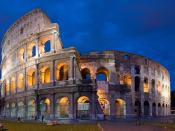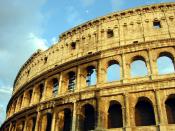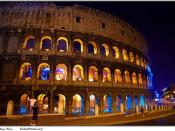How did the design of the Colosseum give form to its public function and to its symbolic meaning?
In the first century AD, the Roman Emperor Vespasian decided that Rome needed a stadium that would not only satisfy the crowds, but also convince the magnitude that Rome had become a power to be reckoned with. He wanted them to know that Rome now once more had strong and unquestionable power in the world after the strong and bitter civil war it had recently gone through. His idea was to create an amphitheater. This theater was originally named the Flavian Amphitheater, later renamed the Colosseum and it earned a reputation as the greatest and deadliest structure ever built during the Roman Empire. The Colosseum, with its influences on arena combat, architecture, and social status, was a significant cultural symbol for the Romans.
In the minds of the Romans, the amphitheater was a place of significant
symbolic meaning.
It was a place of civilized order where, from the Roman point
of view, the victory of civilization over lawlessness, chaos, barbarism, and
savagery was regularly enacted.The Colosseum was initially built as a monument to the Roman victory over the Jews, and also as a gift for the people of Rome to enjoy, for this reason the Colosseum had to be a spectacular structure in itself and this was expressed within the architecture. It is a Romanesque building of lavish proportions; the design incorporates striking pillars, arches and columns which all attribute to the solid and beautiful appearance of the Colosseum. The Roman engineer, Vitruvius said the architectural requirements of the Colosseum were 'commodity' 'firmness' and 'delight' and it can certainly be said that this is the case.
When designing the Colosseum many things had to be taken into consideration in relation...


